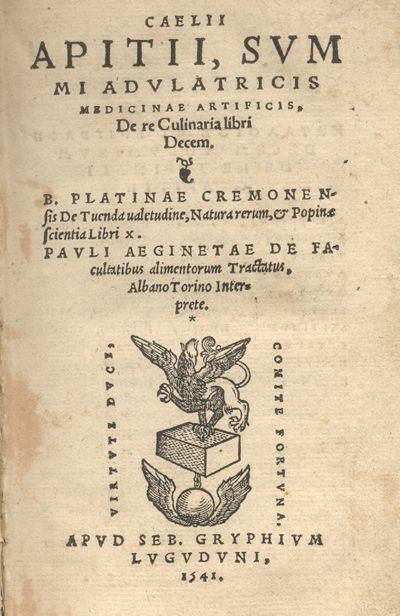While it may seem like the bad side of the term "foodie" is something of a new phenomenon, it’s far from modern. Meet Marcus Gavius Apicius, the man who started it all in the first century AD.
While it
might seem that the foodie douchebag—the bastard child of countless food blogs,
our culture's continuously growing obsession with all things new, bizarre, or
extravagant in food, and the all-documenting eye of Instagram and its #foodie
vortex—is something of a new phenomenon, it's far from modern. In fact, the
origins of acting like a tool when it comes to food can be traced all the way
back to ancient Rome, to the first century AD. More specifically, the life and
death of Marcus Gavius Apicius, the world's first gourmand.
Lover of
luxury and all things gourmet, Marcus Gavius Apicius was a wealthy member of
Roman high society who lived and breathed all things excessive. As a member of
the Roman elite, Apicius served under Emperor Tiberius as a culinary adviser,
often cooking for and dining with society's elite. But Apicius is usually
credited (though it is often disputed) with penning the earliest known
cookbook, Apicius. Divided into ten sections covering all categories of
proteins, vegetables, and desserts—even housekeeping and gardening, the Apicius
cookbook has some serious cornerstone classics, like a good soufflé.

Photo via Wiki Commons
Beyond his
claim to ultimate foodie fame for being the first known cookbook author,
Apicius was also a man who threw an unforgettable dinner party. While most of
the Roman population lived off pottage—a bland stew made of wheat and millet,
with the occasional bit of offal or fish—Apicius's lavish dinner parties were
legendary, consisting of numerous dishes made with exotic and expensive
ingredients, from varieties of fowl to shellfish, seafood, and other meats, sourced
from far away places. Apicius disapproved of anything that was remotely close
to resembling peasant food, convincing the emperor's son, Drusus, to refrain
from consuming cabbage tops or sprouts because they were too
"common." Things like fig-fed goose liver, dolphin meatballs, boiled
parrot, roasted ostrich, sow's womb, and camel heel were all regular
appearances in his kitchen.

Stuffed Chicken, one of Apicius's recipes. Image via Flickr user vintagedept.
But the
ingredients weren't just exotic; they were also carefully sourced. After
getting the word about some incredibly tasty shrimp off the coast of Libya,
Apicius chartered a boat with a full crew to sail over and purchase some for
himself. But when said shrimp were presented by the local fisherman who
approached his boat, he turned back without even going ashore: the briny
crustaceans weren't up to his standards.
With a
published cookbook under his belt, friends in high places, and his reputation
for throwing the most raging feasts—not to mention his boatloads of sestertii,
the Roman currency of the time—the Roman cooking scene in one AD was, without a
doubt, Apicius's bitch.
Everything
looked like it was going his way, that is, until it wasn't.

Roman feast re-creation at the British Museum. Image via Flickr user vintagedept.
After years
of constantly cooking luxurious meals in the midst of a life of true excess,
Apicius realized—a little too late—that he had spent the majority of his rather
large fortune by feeding his obsession with food.
While the
amount of money left over would have been enough for him to live out the rest
of his life in relative poverty, Apicius felt that having to live his life
eating the peasant food he so reviled was not going to cut it. So he decided to
throw on a party toga and spend the rest of his fortune doing what he did
best—throwing one last over-the-top dinner party that would make even the
modern eater weep. And then he poisoned himself, but not because he was worried
about living out the rest of his existence in penniless obscurity, but because
he was afraid of starving to death.
By Vice/ Munchies